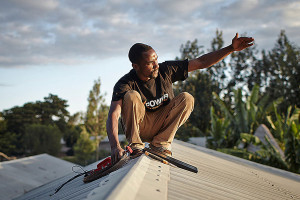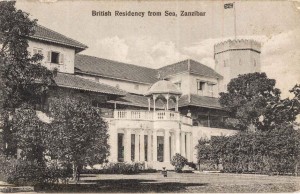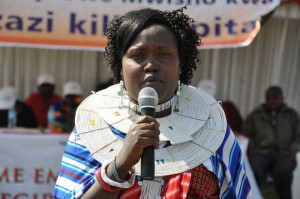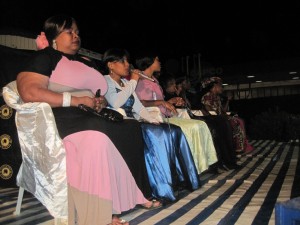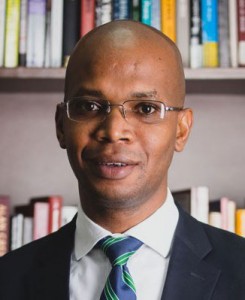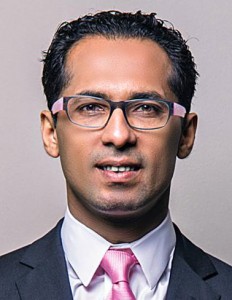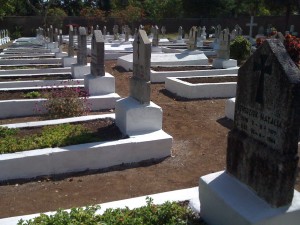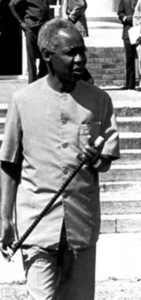by Donovan McGrath
Editor’s Note: This section of Tanzanian Affairs, is very popular with readers, as it includes interesting and often moving stories that readers can relate to. It is reliant on the contributions by the TA readership, and it would be greatly appreciated if you could send in any news items you find concerning Tanzania. We would also like to hear your comments on any items published in TA.
By the river of Msimbazi, a health crisis looms
“I will live here until I die,” says Mussa Kibwana, crouching in an ankle-deep pile of decaying garbage. The main road in his neighbourhood is made entirely of trash – plastic bags, bottles and far more sordid kinds of waste. Kibwana lives in Magomeni, a small ward in the Kinondoni district of Dar es Salaam. The garbage is left over from last year’s rainy season, deposited there by the flooding of the Msimbazi River… “The trees around this area block the dirt in the river, and when the water can’t pass through, it rises and flows into people’s houses.” The Msimbazi is severely polluted, he explains, and its bacterial levels are as dangerous as the flooding itself. But the pollution is both a gift and a curse to communities by the river – when the flooding starts, their only protection comes in the form of “waste walls.” They use trash found in the Msimbazi to build barriers along the banks which help keep the rising water at bay… [I]t just so happens that the garbage is the cheapest way to fight the floods. The Msimbazi is the longest river in Dar es Salaam … Garbage blockages not only force the water higher during the flood season … but prevent it from flowing during the dry season as well… [T]he residents of Magomeni aren’t the only ones polluting the river – the Msimbazi is a discharge sight for textile industries, municipal waste stabilisation ponds, and home sewage pipes… (East African, April 11-17, 2015)
Dangote Cement to Begin Production In Tanzania
The sub-Saharan Africa’s leading cement producer, Dangote Cement, said it will begin production of cement in Tanzania’s Mtwara region in August. This is contained in a statement by the Office of Tanzania President, Jakaya Kikwete, in Dar es Salaam. It said the date was announced at a meeting between President of Dangote Group, Aliko Dangote and Kikwete … The 500 million dollar factory, which has an annual capacity of 3 million tonnes, will double the country’s annual output of cement to 6 million tonnes. However, Dangote faces challenges in accessing coal and natural gas as sources of cheap power to run the factory. Tanzania, East Africa’s second-biggest economy, has made big natural gas discoveries and had coal reserves of up to 5 billion tonnes, but lacks infrastructure to deliver the energy to major factories… The Tanzanian plant will supply the domestic market and export to landlocked countries in the region. It will be competing with other Tanzanian cement producers, including Tanzania Portland Cement, owned by a subsidiary of Germany’s Heidelberg Cement AG. There is also the Tanga Cement, owned by Afrisam Mauritius Investment Holdings Limited; and Mbeya Cement, owned by France’s Lafarge SA. (nigerianobservernews.com – 6 May 2015)
US forces train game rangers in Tanzania
Extract: An elite unit of the US Armed Forces was … in Tanzania to train game rangers and wardens in how to use American war tactics to fight poaching and wildlife trafficking in the country. The first ever exposure of the game rangers and wardens to American combat skills ended on March 27 with a graduation ceremony attended by senior diplomats and Tanzania wildlife conservation officials… The use of the US military in the war against trafficking of animal parts is the latest endeavour by the government to end rampant poaching, which has reached alarming levels in the whole of East Africa… (East African, April 4-10, 2015)
Reports: Nonprofit VETPAW kicked out of Tanzania
By Jon R. Anderson, Staff writer. A small but splashy veterans group with lofty plans to take on African poachers has been kicked out of Tanzania in the wake of what appears to be a self-inflicted publicity blitz run amok. A six-person team with VETPAW – Veterans Empowered to Protect African Wildlife – was ordered to leave the East Africa nation following a burst of controversy. According to VETPAW posts and comments online, the team had been accompanied by an Animal Planet film crew that was producing a show on the group… In a recent press conference surrounded by dozens of fatigue-clad Tanzanian park rangers whom VETPAW had come to train, the head of the country’s Ministry of Tourism and Natural Resources said he was “saddened” by recent posts that have been circulating widely online. Those have included pictures of “tactical model” Kinessa Johnson – a former Army diesel mechanic now with VETPAW – posing with various weapons and gear. Most, if not all, of those pictures appear to have been taken before her tour to Tanzania but have been posted recently in the group’s social media accounts, spurring a spate of blogger and media interest. “Meet the Badass, Tattooed Army Vet Who’s Hunting Down Poachers in Africa” was typical of many headlines. Overblown media hype of a group that was just there to train, not fight? Maybe, but then some of her actual comments surfaced… “We’re going there to do some anti-poaching. Kill some bad guys and do some good,” Johnson says in one YouTube video posted from the gun industry’s annual SHOT Show in Las Vegas in January as VETPAW was preparing to depart for Africa… (militarytimes.com – 7 May 2015)
Rich getting richer, poor getting poorer? Africa’s inequality struggle
Fast cars thunder down tree-lined avenues. Luxury yachts sway in the sparkling marina, while diners in trendy beach-side restaurants clink Champagne glasses, enjoying the gently ocean breeze. This isn’t Miami or the French Riviera, but Luanda, the capital of Angola. The city is a poster-child for the extraordinary economic boom experienced by many African nations since the early 2000s, its crane-filled skyline testament to the breakneck speed of construction seen in recent years. But it’s not just Luanda. From million-dollar mansions dotted along Mozambique’s coastline, to high-end shopping emporiums in Nigeria’s metropolises, oases of influence have sprung across the continent which has been home to seven of the 10 fastest-growing economies in the world… “On the one hand you hear glowing stories of growth and prosperity, shiny new buildings being built, big cars, nice homes, and lots of consumption. But Africa is producing bigger and bigger numbers of poor people, so poor so desperate” says Ali Mufuruki, CEO of Tanzania’s Infotech Investment Group and member of the International Monetary Fund’s Group on sub-Saharan Africa. He adds that the growth statistics measure only those who are active participants in the economy leaving out the marginalized masses who often find themselves in sporadic, informal employment… Reasons for these diametrically different realities are complex, but the main culprit seems to be the nature of the growth pattern which enabled the already wealthy to get richer, without a significant impact on the rest of the population. Rakesh Rajani, a Tanzanian civil society activist, says that a lot of the growth has been driven by industries like mining, oil and gas and, to some extent, tourism – all of which don’t employ a huge number of people… (edition.cnn.com – 12 May 2015)
The albino children locked away to be safe from witch-doctors
The terrible plight of albinos in Tanzania continues (see related article in TA111): It was from neighbours that Scola Joseph first heard of two strange men in the village asking after her children. She knew immediately the moment she dreaded had com. Packing small bags for Elijah, 3, and Christine, 5, she led them away from their home and towards the nearest town, to a government camp where hundreds others like them were living under protection. It is the only way to keep them alive. Buhangija is one of nine such centres in Tanzania. This is where the country’s endangered class of albino children are moved in an attempt to keep them safe from witch-doctors, who claim their body parts, ground up and put in charms, can bring wealth and fortune… Albinism, caused by the lack of pigmentation in their skin, hair and eyes, affects about one in 20,000 people worldwide, but is for unknown reasons more common in sub-Saharan Africa and Tanzania particularly, where it claims one in 1,400. At least 75 children and adults with albinism have been killed here since 2000 and more than 62 others have escaped with severe injuries following the witch-doctors’ attacks. With witch-doctors paying as much as $75,000 for a full set of body parts … [S]ome of those implicated in the killings are members of the victims’ own families. The UN warned recently of a marked increase in attacks on albinos, which it said were at greater risk with the approach of national and local elections in October… January Makamba, a candidate vying to take over from President Jakaya Kikwete, said a better solution had to be found for people with albinism to live safely in Tanzania. “It’s an embarrassment to this country that we have to keep them in camps like this,” he said… (Sunday Telegraph, 5 July 2015)
Tanzanian low-cost water filter wins innovation prize
A water filter which absorbs anything from copper and fluoride to bacteria, viruses and pesticides has won a prestigious African innovation prize. Its inventor, Tanzanian chemical engineer Askwar Hilonga, uses nanotechnology and sand to clean water. He told the BBC his invention should help the 70% of households in Tanzania that do not have clean drinking water. The prize, worth £25,000 ($38,348), was the first of its kind from the UK’s Royal Academy of Engineering. Head Judge Malcolm Brinded said, “His innovation could change the lives of many Africans, and people all over the world.” The sand-based water filter that cleans contaminated drinking water using nanotechnology has already been trademarked. “I put water through sand to trap debris and bacteria,” Mr Hilonga told the BBC’s Newsday programme about the filter. “But sand cannot remove contaminants like fluoride and other heavy metals so I put them through nano materials to remove chemical contaminants.” … “For people who cannot afford water filters, we have established water stations where people come and buy water at a very very low, affordable price,” he added… (bbc.co.uk – 2 June 2015)
Cholera hits refugees in Tanzania
About 3,000 refugees fleeing political turmoil in Burundi have been infected in a cholera epidemic in Tanzania … Up to 400 new cases of the deadly disease were emerging every day … mainly in Tanzania’s Kagunga peninsula where tens of thousands of Burundians have taken refuge … ([London] Guardian, 23 May 2015)
Inside the elephants’ graveyard of Tanzania
Herd numbers face wipeout at the hands of poachers, but little is done to halt the slaughter. Extract continues: As Howard Frederick flew in a Cessna low over the scrubland of Tanzania’s Selous game reserve, it was the complete absence of elephants rather than the piles of scattered bones he saw that chilled him the most… Tanzania had lost two-thirds of its once mighty elephant population in just four years as demand from China for ivory tusks sent a highly organised army of rifle and chainsaw-wielding criminals into its game reserves… Having let the way in calling for a ban on elephant ivory exports in the Eighties, Tanzania has grown complacent about safeguarding its bountiful wildlife… Run by big criminal syndicates based in Dar es Salaam, the poachers worked in “highly mechanised teams”, according to Mr Frederick. “You would have lead teams who would go out and scout an area, then kill teams come in, ambush and kill whole groups,” he said. “They move on to the next area while the butchering team comes in and chops all the tusks, and then the transport team comes in. “It’s progressed from being very casual poaching to teams of highly organised individuals.” Tanzania’s herds … in 1976 … had 316,000 elephants, the largest population on the planet… In Selous and its surrounding ecosystem, the elephant population was the lowest since counts began, down from 109,000 in 1976 to 13,084. The Tanzanian government said it would beef up protection and accepted offers of help, including one from the Americans who sent marines to train its rangers… (Sunday Telegraph, 19 July 2015)
Radio: Twiddle that dial
With half the adult population in Tanzania tuning in to local radio, community stations have an influence way bigger than their budgets – and have even been known to save lives. Extract continues: Baloha FM had only been on air for five weeks when a deadly storm struck the village of Mwakata in north-west Tanzania, killing more than 40 people and destroying hundreds of homes. The radio station’s founder, Samada Maduhu, found himself catapulted into the emergency relief effort in early March of this year: “The district commissioner, MPs, representatives of NGOs [non-governmental organisations], UN agencies and officials from ministries were here broadcasting information to the victims,” he recalls. In the following days, people stranded by the torrential rains were found because they were able to call in to the radio. Such community engagement often lies behind the impulse to create a local radio station. Micheweni FM, situated in the remote rural area on the Zanzibar Archipelago island of Pemba, began in reaction to local conservative voices preventing young girls from attending school. “You only need to educate one girl and she can change the whole world,” says Ali Massoudi Kombo, manager of the station, which is the only media in the district of more than 130,000 people. Micheweni FM only began broadcasting in 2010, yet girls now outnumber boys by two to one in classrooms, according to the local government’s district planning officer, Hamadi Massoudi… (Africa Report, June 2015)
How a displaced Polish family found itself as refugees in Tanzania
(See related article in TA108) As the world marks World Refugee Day on June 20, millions of people around the world today are stateless or are refugees. This story traces the journey of one Polish family uprooted from their home during the Second World War who found themselves stateless refugees in Africa in the 1940s. Extract continues: The letters are written in ink in a tight, classic script… Some of the earlier ones are datelined Teheran or Morogoro, but most were written from Tengeru and address to “Our dearest Papa.” … And they are written in Polish… The writer of this momentous news was the almost 13-year-old Stanislaus Odolski, who lived, along with 5,000 other Poles, at Tengeru, northern Tanganyika, one of the first refugee camps in Africa, from 1944 to 1948… [F]ew East Africans ever expected to see large groups of Polish people deposited in their midst as refugees… [The wife of Anton Odolski – “Dearest Papa”, his] daughter and son Stan were among the 37,272 Polish – but stateless – civilians, including 13,948 children, who were evacuated from the Soviet Union and travelled overland to Teheran and then on to various parts of the world under British influence for resettlement since they could not return to Poland. The Odolski family landed in Nairobi; some of the Polish refugees went to Masindi in Uganda. They went to Tengeru via Morogoro… (East African, June 20-26, 2015)

